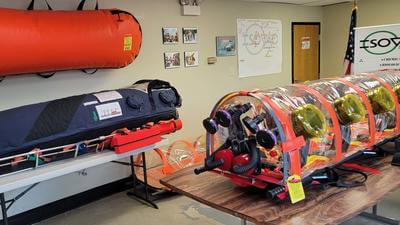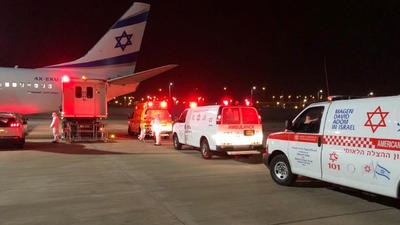Post-Covid air medical transport missions: are they really ‘post’?

TrustAir Aviation’s Medical Director Dr Istvan Lunczer shares the latest challenge facing air ambulance operators – the safe transport of Covid patients who continue to suffer from long-term respiratory distress and failure
As healthcare systems across Europe emerge from the chaos of Covid-19, there is a new challenge every provider in transport medicine is about to face. Just as we had to resort to a learning-by-doing philosophy when it all started during the spring of 2020, there is now yet another concept with which we must become familiar.
At TrustAir, we are experiencing an increasing number of requests for the transport of patients, who, although they have overcome the worst part of the symptoms caused by Covid-19, remain in severe respiratory failure for a prolonged time after being infected by the virus. These cases are often labelled as ‘post-Covid’ by insurance and assistance customers, and are thus expected to be treated similarly to our previous, ‘sterile’ missions.
While there are well-defined guidelines in existence based on scientific evidence that help air medical providers identify which patients present a low-enough risk of being infectious that we can discontinue airborne precautions (i.e., transport them without a portable medical isolation unit), the pre-assessment, organization and execution of such missions still present many challenges and additional costs.

First of all, there might be a misconception of the terminology. Covid-19 is the name of the illness, and the patients in question do have this diagnosis. What could be confusing is that there is no clear definition of a patient being ‘post-Covid’, other than being completely healed, and symptom free. (Not to mention the emergence of long Covid, which is actually being used synonymously to post-Covid conditions, but in reality, has a whole different meaning.)
Secondly, even if the staff of the treating hospital is aware of the above-mentioned preconditions of discontinuing airborne precautions, or has already obtained a negative PCR result for the patient, due sometimes to insufficient hospital bed capacities, or of simple convenience, these patients often remain on Covid ICUs, in a contaminated zone, until they are weaned off the respirator. That means medical transport crews have to use full-spectrum PPE for their own protection when carrying out bed-to-bed missions just to perform the handover, even though the patient is not considered infectious anymore. The situation is quite similar at the receiving facilities – patients are often placed in hospital ‘red’ zones.
Last but not least, these patients are often in a very severe respiratory failure, requiring aggressive ventilation strategies (high FiO2, high PEEP), resulting in unprecedented amounts of oxygen consumption of. Due to the limited supply that is possible to be placed onboard, connecting missions are, more often than not, impossible.
‘Covid is a game-changer’ – goes the saying, rightfully so. There is a whole array of new strategies to be developed and tailored to everyday use, and these cases, although often referred to as ‘post-Covid’ cases, are indeed a lot closer to active Covid-missions in terms of required planning, costs, human resources and consumption of medical supplies.

July 2021
Issue
- Adapting skills and aircraft for police multi-mission capabilities
- How UAVs can boost force efficiency
- Selecting the right equipment for police surveillance and SAR
- Interdisciplinary HEMS crew integration in Norway
- An exclusive excerpt from PostFlight: An Old Pilot’s Logbook
- Interviews: Tab Burnett, Alaska Department of Public Safety; Kevin Kissner, Virginia State Police
- Provider Profile: European Air Ambulance
Dr Istvan Lunczer
Dr István Lunczer is an emergency physician with substantial experience in the prehospital care, aviation and transport medicine. He had worked as a physician in HEMS for eight years, and has flown hundreds of intercontinental fixed-wing missions since 2012. He has been the medical director of TrustAir Aviation since 2019 and he is the author of several textbook chapters dealing with intensive care transport.



